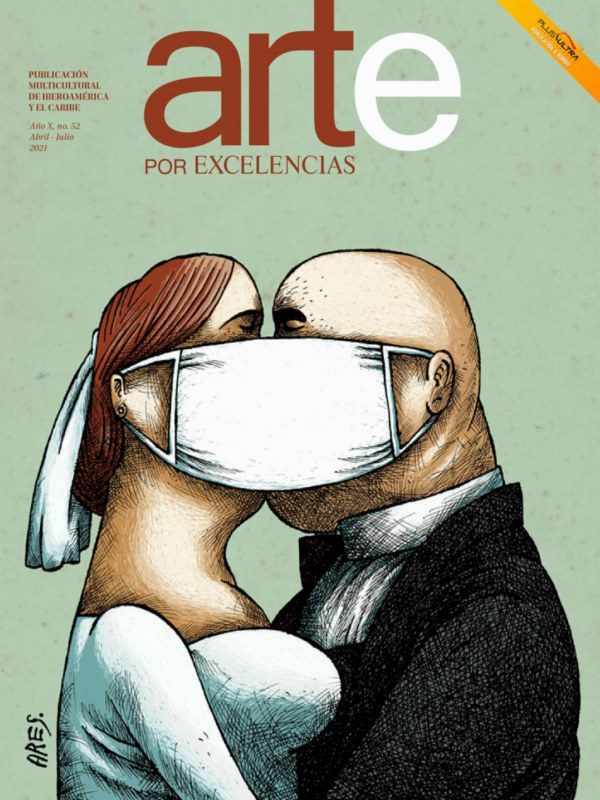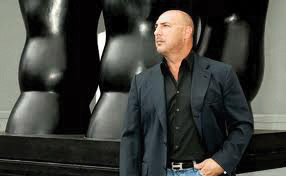 This interview with Gary Nader came up quite unexpectedly, at a time in which I was trying to gauge the impact of the fine arts in Miami. I was strolling around the Art District –a place that has been readapted in both time and space, and that defines the trends and complements between the promotional efforts and architectural functionality– when I suddenly discovered Botero’s giant sculptures and a Ferrari car parked across from an industrial facility. The name of the building could not be made out from my vehicle, but both the Botero piece and the Ferrari piqued my curiosity. I walked in and asked, and it was there where I met Gary Nader, a special man in a world that’s today marked by practical reality.
This interview with Gary Nader came up quite unexpectedly, at a time in which I was trying to gauge the impact of the fine arts in Miami. I was strolling around the Art District –a place that has been readapted in both time and space, and that defines the trends and complements between the promotional efforts and architectural functionality– when I suddenly discovered Botero’s giant sculptures and a Ferrari car parked across from an industrial facility. The name of the building could not be made out from my vehicle, but both the Botero piece and the Ferrari piqued my curiosity. I walked in and asked, and it was there where I met Gary Nader, a special man in a world that’s today marked by practical reality.
Then the unexplainable happened: the taped interview was lost and only after a long time I managed to recover the voice file. It’s been nearly a year since that day, but I’ve noticed that the conversation is still fresh and living, and it continues to impress me for the talkativeness, the knowledge and, above all, the staunch defense Nader made about art collection and gallery work. It’s reasonable that his gallery –perhaps the largest in the whole world with over 55,000 square feet and cherishing a considerable inventory of the Latin American art masters– is no doubt a must-see reference when it comes to the history of art in the 20th century.
What strategies do you follow to make people know about your gallery?
I send out catalogs, give interviews like this one in an effort to draw in people… Sometimes I spend a month in Europe and when I come back it surprises me to see what has been done at the gallery. Plenty of work, a lot of sacrifice, it’s my dream come true. I have a private collection of artworks that are not on sale, a collection that belongs to my family. The important thing is to showcase collections rather than keeping them hidden somewhere in the house. A collection that’s not displayed is just worthless. I constantly promote my collection all around the world: the Middle East, Europe, all across Latin America. My next destination will be Asia because I haven’t had time to work in that direction. With this much work piled up on me, this effort takes time, a lot of time.
What’s the concept your gallery banks on from both promotional and commercial standpoints?
The gallery’s concept is pretty simple: I run this business as if it were my own household. Of course, it’s a 40-plus-year story we’re talking about because my parents owned galleries since I was eight or nine years old. I’ve been traveling around the world for the past thirty years, swaying between auctions of both modern and contemporary art in London, New York, Paris, Italy. I visit all the biennials, the fairs in Paris, Basel, Miami, Chicago, Buenos Aires, Lima. It’s a nonstop learning process in search of those works of art that please me. For many years I looked for young artists and, as you can now see, my gallery shows the works of many young artists.
We boast a very complete inventory of Latin American art masters, the most important Botero collection in the entire world since it embraces all the periods: the 1950s, the 60s, the 70s, the 80s. But at the same time, there’s a considerable chunk of American contemporary art, like Sam Francis, Kippenberguer… we also have a major exhibit of Frank Stella works, the great American master who is also one of the artists our gallery represents. In my family this is a passion rather than just our main business, and when we buy some paintings and sell others we do it just to leave a legacy to our children –which is the third generation– and a legacy to the community. We’ve mounted some 200 expositions and auctions, art fairs. We put out our own catalogs and art books. The main thing is that this gallery has done everything it has set out to do.
We’re Lebanese, but I was born in Santo Domingo where my parents have a gallery. Whoever arrives in Santo Domingo, musicians, politicians or international personalities, they always visit that gallery. That’s what I’ve wanted to do in Miami, to make visitors pay a must-see visit to our gallery. Since it’s quite a big space, it was set up to hold meetings for up to 2,000 people. I lend this space on a regular basis to non-lucrative organizations and charity institutions. It’s a very social-oriented space. Something else I want to do –and I stress on– is to lure young people to the gallery. I was lucky because I was related to the arts since an early age and I believe that bringing the art to the kids is giving them a pretty good edge, not only for the kind of enjoyment they will have in the future, but also because it gives them an edge in terms of their appreciation of beauty. I insist on bringing in the kids since an early age, since they are babies. And it’s not only because of the need to show them the fine arts, but also to open them to dancing, to music, because experiencing the art makes life worth living in a richer way. It’s important to encourage that sensitivity in children and youngsters.
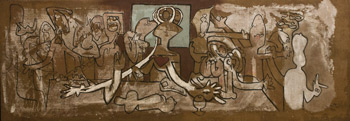 Your origin is Lebanese, so I assume that as part of that culture ingrained in you there are traditions you still cling to… Coming from such a rich country with so special culture and religious diversity, have you ever thought of bringing the art from that region of origin to your gallery in Miami?
Your origin is Lebanese, so I assume that as part of that culture ingrained in you there are traditions you still cling to… Coming from such a rich country with so special culture and religious diversity, have you ever thought of bringing the art from that region of origin to your gallery in Miami?
I was brought up by my parents as a Lebanese, though I also have influence from the Dominican culture where I lived till the age of 23. I’ve traveled several times to Lebanon, Egypt, Qatar and the Persian Gulf nations, and I’m now learning from those regions and from that art. Unfortunately the Middle East is right now the same way Latin America was some thirty years ago: there are no publications, no books, no exhibits, though they seem to be little by little waking up to that reality now. For instance, there’s no such thing as an art museum in the entire Gulf region. They are going to build one, but there’s no major museum in all of Lebanon either. Then, how can you get informed on what’s being created there unless you travel there and take a look at it directly? In recent years I’ve been over ten times to the Middle East, just learning there. I’ve proposed them to exchange exhibitions, bring what they’ve got down here and take what I’ve got here to them over there.
There’s some wrong branding on the Arab world as a result of the 9/11 attacks. The region is viewed as backward and terrorist, like the Muslims that lived there back in the year 1500, but that is all wrong. Extraordinary artworks are being created right now in both Iraq and Iran. What we can’t do is try to ram our culture down their throats because those people have lived over a thousand years without a single museum. Qatar has just finished its museum of Islamic art… We need to foster a cultural approach, make them understand our culture and try to understand theirs. It’s not about launching a cultural invasion.
Among the proposals I’ve made to them, I showed them a park of monumental sculptures and a number of museums, one of them dedicated to Latin American art that could comprise from the early 1900s to date. They have the means, yet they need people who could guide them. If it’s international tourists what they are after, then they need to have international offers in the United Arab Emirates and Qatar. At the same time, if they truly want their artists to bask in the international limelight, then they must take them to the proper places. That takes a lot of time. We started promoting the Latin American art some forty years ago and look how far it’s moved to. There’s not a single major art gallery around the world, say in New York, Paris or London without an exhibit of Latin American art. If they want our support, they need to support us as well.
For instance, the first European country I visited was Spain and I was flummoxed to see no Latin American art exposition there. If you go to Paris, that’s a completely different situation because nearly all major Latin American art masters lived there. Wifredo Lam lived in Spain back in the 1920s, but only for a short span of time. He spent most of his lifetime in Paris. Spain’s contribution to the development of the Latin American artistic creation has been pretty slim. Yet now some boldface names are living in Spain, like Carlos Quintana, Mariño, very valuable young artists… But going back to the Middle East, there has to be some commitment on their part more than on ours. I don’t want to be just another dealer in the Middle East, in Qatar –the country I’ve basically been related to the most on a regular basis. I didn’t go there to sell because selling is a piece of cake for me. What I’m proposing them is a number of cultural exchanges. If they see my point, that’ll be great; if they don’t, at least I gave a crack at it.
When you mention your participation in international events, you don’t include ARCO in Spain.
I planned a fair; I organized it and produced it. It was called Contemporanea and I brought along some fifty Latin American contemporary artists. I think fairs are very important because they reel in many customers. And all major art galleries around the globe organize their own fairs, but that’s not my way and they’re not in my best interest. Planners invite me to attend, but this gallery of mine takes up so much of my time that I almost have a fair and a museum to call my own.
There’s a larger space that was designed to display private exhibits or expositions organized by museums with no place to showcase their stuff. As you must know, space is the main problem; it’s very expensive to run a place this big and sometimes not even the State can do that. There’s a perception in the public attending fairs that everything exhibited there is of high quality and that much is not true because fairs are not curated by experts; they are curated based on the need to come up with a space for sales, so that’s why I don’t like fairs. That’s not my way of selling art; I prefer a more personal kind of commercial management. It’s true that they are effective in a way because all major dealers around the world need them; but not me.
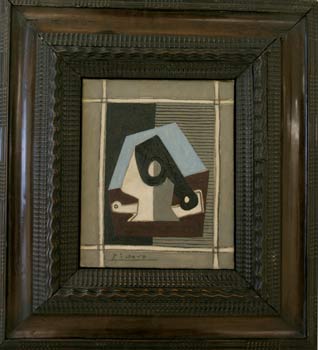 What do you make of the digital art created on the Internet these days?
What do you make of the digital art created on the Internet these days?
Everything being made on the Internet –digital art and video– has its own moment in history and its own value: it’s a new and extraordinary way of art creation, but there’s a problem with that and a lot of confusion. Some people think that painting, sculpturing and even photography are a tad outdated. Painting will always be painting. There was a concept in the past that sculptures were supposed to be made of just one material: brass, lead, marble or stone. There are over 500 different materials sculptures can be made of. There are kinetic sculptures, artists who create sculptures with videos by showing their artwork on a tridimensional surface, and all that much is very valuable. But people should not get confused: good painters and good sculptors are never ever going to be out of date. I’ve also been a strong advocate of not having to be so cautious with artists who are in vogue because that’s only what they’re going to be: artists in vogue. Some artists have inflated price tags tacked on them, young artists with no career behind them, with no exhibits or publications. But that’s what good marketing is all about.
I’ve seen your gallery treasures photographs from the 1930s to date. Do you think computers, designing software and photographic retouches are putting a negative spin on photography as an art?
No, on the contrary. We live in a time in which we need to understand the new creative methods. There’s a lot of trash too in painting and sculpture. The fact of the matter is that you need to handpick the good things within that art. I love photography. I always say that if I were a dealer, I’d be a photographer, and you can see around here, there’s no such thing as photographic concept in this gallery, but just an assortment of artworks by many artists and international masters, especially artists I like tremendously. I just bring them in, as I said, the things I like. If it’s good or bad, that’s up to the critics to make that call. But as I can see, we do have a good eye. I give plenty of credit to what many people do today in the realm of digital art. Of course, the artist always has to be present, there has to be a creator behind the computer, the camera or the concept.
Can we say you were one of the forebears in the sale of Latin American art in the United States?
You bet. I hate bragging about myself, but if you take a closer look at my résumé, nobody has ever pulled off the amount of major expositions we’ve pieced together: thirty exhibits of Latin American art masters, very complete, individual exhibitions much larger than those organized by the museums. They’ve been on Wifredo Lam, Matta, Armando Morales, two or three about Botero, Julio Larraz, Mario Carreño… We have created catalogs of each and every one of these exhibitions because I trust publications with all my heart. So far we’ve put out some forty or fifty publications.
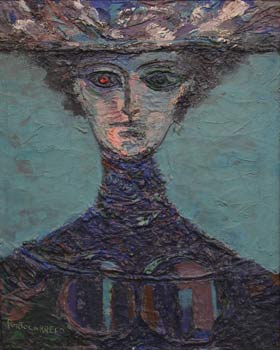 Who are, in your opinion, the finest Latin American and Caribbean artists ever?
Who are, in your opinion, the finest Latin American and Caribbean artists ever?
Latin American art is an old concept that must be updated. Back in the 1930s, 40s and 50s, Latin America’s most industrialized nations share a number of common features: they were all Spanish-speaking nations –with the exception of Brazil– they have similar social and political structures. There used to be a more conjugated language among those nations, but not today. Today’s Argentina has nothing to do with the Dominican Republic. If you delve into the Latin American painting and sculpturing from the past, there were many artists who shared common features. But as a result of the conveniences of today’s globalized world, like communications and the Internet, Latin American artists are more international than regional
I strongly believe the Latin American art existed till the 1960s and is now past its prime. At that time the great masters were fewer and that’s one of the things that used to bring them together. The art business has become so lucrative that has eventually encouraged many people to jump into it; there are lots of artists. You go to the Dominican Republic, for example, and you see over 1,500 people watching art. Of course, the strongest influences are coming from Mexico, Argentina, which are the two big creators, and there are such exceptions as Cuba and Colombia, let alone Brazil, which is taking the lead not only in Latin America, but all around the world. Brazil’s contemporary artists can be stacked up against their peers in Germany, China or Japan. The Caribbean is something else because they share a more common language. They have African origins, colorfulness, nature, traditions, an idiosyncrasy that unites them and makes the region so peculiar.
This is perhaps a tough question to answer, but not for you, I guess. What’s your definition of the kind of art created in the Americas and the Caribbean?
It’s contemporary art, modern art like any other. If you tell Guillermo Kuitca –Argentina’s most outstanding artist of the past forty years– that he’s Latin American, he’s definitely not going to like that because he’s a contemporary artist, a world artist. The same happens with Vik Muniz or Netho in Brazil. They have influences hailing from the place they live in, from the context, but that Latin American artist concept doesn’t fit in them.
Then, do you think it’d be pejorative for an artist to be pigeonholed in a Latin American atmosphere rather than a global ambience?
The term Latin American conveys now a geographical connotation rather than a conceptual one. Today’s Latin American art is the one produced in Latin America, though not exactly created by a Latin American artist. It could be done by a German or a Belgium artist, or in the case of Francis Alys, who lives in Mexico and is strongly influenced by things he sees every day, he uses people from his own neck of the woods who both exert influence on him and helps him to get his job done. For instance, the Tate Modern Gallery in London has its own Latin American collection. President Obama is building a museum to showcase the contribution of Latin American artists to the art in the U.S., and a considerable chunk of that contribution will have to do with painting and sculpturing done by artists who have tremendous influence in the United States. But it’s not the same concept of the 1940s or the 1960s when we used to watch Mexico’s Diego Rivera and Spain’s Vela Zanetti doing almost the same stuff. Netho, for instance, an artist who creates those huge nets, who cherishes his geographical history and has tremendous influence in Brazil, can be exposed anywhere around the world. He can be German, Chinese or Japanese.
I’d like to know what your vision of art in the near future actually is.
I don’t think there’s going to be such a dramatic change… At the end of the last decade, the Internet came and an avalanche of trends, like performing art, earth art –art created on earth– are just fleeting things. Video has acquired paramount importance and there’s the so-called conceptual art. What we can’t be wrong about is the fact that classical art is not always classical because it continues to be contemporary. The new things cannot be the only valuable stuff out there. On the contrary, what’s actually valuable is what has been historically proven. There are many artists and gallery owners –and that’s something I complain about– that coupled with the auction houses have ratcheted up prices to unreal limits. There are 30-year-old youngsters selling works for $800,000. Those are not painting geniuses or people who have invented the wheel… Of course, the most important thing is the kind of contribution these creators can actually make both within the modern and old realms.
Indeed we’re not inventing anything because art is still art. You view it either with an old, contemporary or modern eye. There are things that will remain unaltered and others that will eventually fade out. The two fundamental parts of art are the artwork’s ingrained intellectual character and commercial character. One cannot exist without the other. Because, why can you promote those artists without marketing? That’s why there are galleries, magazines, fairs… They go hand in hand, but they cannot betray one another and that’s what’s happening every so often these days.
That concept is clear and classical, just as you put it, since the time when the Spanish monarchs used to commission their own artworks and used to value the artist more than anything else, no matter if he wasn’t the best. However, there’s a good deal of talented artists with amazing skills who are completely unknown. What opportunities are there for them?
Keep working is the only way out; keep knocking on doors; keep creating paintings, sculptures, videos, keep doing what the artists want to expose. They have to carry on because if they truly believe in their painting or in their art, they’ll die with that art until somebody discovers them and promote them. Van Gogh is a good case in point. He died at an early age, completely insane and nobody had appraised his painting. But his family did believe in him and look what he’s become. There’ll be many cases like this of painters who will go unnoticed. Now it’s a whole lot harder to go unnoticed because of the globalization, the Internet, the biennials.
Few things actually surprise me because I’ve seen quite a lot. I only like a handful of things these days. At the Venice Biennial I saw a Brazilian artist who really stunned me. It’d been a long time since I’d seen something so stunning to me. His work shows a blend of colors, themes and compositions. It’s astounding. Next week I’ll hop on a plane and go to meet him. It doesn’t matter if I don’t get to work with him at all. I just want to see the things he’s doing. For instance, the first time I saw Walter Goldfarb was during an exhibit in Guadalajara and I said to myself, “this guy is so weird; what he does is so good, so unique.” Then I went to Arco and I saw him there. I went to Cologne and I saw him there, and that’s how I set out to meet him personally. I was watching 5,000 works, but nothing compared to what he was doing. I called up a collector friend of mine in Brazil and he told me he was one of the greatest talents in the country. I knocked on his door and I now have nearly a hundred artworks by that artist in my collection… Nobody has a magic ball, but quality is undisputable. Anyone with a good eye will always recognize quality. The problem is for those who don’t have an eye and get carried away with the people next to them. Some people ask me how I get cracking with things, and I tell them, “it’s easy to get started, you need to read, visit museums, get educated and then buy.”
I’ve got many friends of high purchasing power, and you walk in their places and always see the same five artists. They buy art as if it were a set of shirts or pants. And today they just can’t sell those artists’ works because their price tags were simply inflated. They used to make headlines in The New York Times, auctioneers said the works had been sold at a certain price, and then my friend rushed to buy them. It’s not about letting other in on what you’re buying, but rather being aware that those things you’re bringing into your house and hanging on your walls actually please you; otherwise those artworks are completely worthless. You may make some money out of that; many people started in this business to earn some money as part of their portfolio. If you get lucky, you might end up buying a work of art that could eventually get some real value, and that’s okay, but that has to take a back burner. The artwork must have that ingrained value you were talking about; you have to like it and be interested in it.
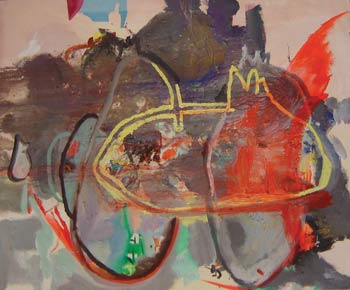 That sounds a tad romantic, isn’t it?
That sounds a tad romantic, isn’t it?
If it is not romantic, then it’s no good.
But there’s a great deal of people who buy art not because they like it, but rather as some sort of investment.
That’s their priority, but they’re definitely losing a great experience. That’s when people get wrong. For instance, in this same gallery, out there, there’s a Picasso that’s worth over $10 million. However, just get a load of this painting right in front of me, which is a whole lot cheaper in terms of price tag. But that’s the one I like to see, I want to see it before it’s gone. I like it even more than the Picasso exposed out there.
In this exposition there are basically paintings and sculptures, more than any other thing. Are there other artistic expression you might be interested in showcasing?
Yes, there’s a video room upstairs, though I don’t prefer that. I admire video; I like it and I enjoy it, but the one thing I truly like, as you have probably noticed by now around this gallery, is classical painting and sculpturing.
I’d like to ask you a question that, based on my personal inclinations, might sound atypical to you. With the kind of facility you own, have you ever thought of mounting an exhibit on car art?
No, I don’t like cars. I love watching them, but they’re not my cup of tea.
Not even a temporary show?
Look, the gallery’s door are open to any kind of offer as long as it convinces me. You’re not the only person who’s asked me that question. I’ve got this friend who owns some 200 classic cars he’s been buying and collecting out of Cuba, and he told me once, “one of these days we’re going to mount an exposition with these cars.”
There’s just another exceptional thing about your gallery, which is the furniture. It’s classical and simple. Have you ever considered prying into the furniture design world?
There was a time when I bought some pretty good pieces. That’s a totally new process and I must tell you it’s something I like a lot. A part of this gallery was designed with that view in mind, but indeed I’ve got no time for that and I think price tags are way too high. There’s a need to understand that you can’t just go tacking price tags on things arbitrarily; we need to talk some sense into that. I haven’t entered this business area because I’m not really familiar with it, not as much as I’d like to. I’m just learning and I ought to have someone with enough knowledge and expertise to deal with that particular area.
As to the exhibits in your gallery, are they fixed or can they also be temporary?
There are so many works in my collection that we can set up several exhibits. For instance, we mounted an exhibition on big cellar by the hand of the great masters, like Picasso, Muñoz Vera, Botero, Larraz. It was very embracing and important. We did another one on portraits, featuring pieces by Picasso, Botero, Lam, Armando Morales, among others. And we also unveiled one on a very young artist named Soraya Abu Naba’a, an extremely talented creator who graduated not too long ago in Paris.
Your gallery is like a museum in which artworks are sold. Based on the size and capacity you have here, you can perfectly have permanent exhibits.
The edge we have is that we own everything in here and no artworks here are consigned; that’s not the trend we stick to. I’ve got a very particular way of getting the job done, and it’s something I learned from my father. You have to buy the artist’s work, at least half of it or a considerable chunk, large enough to let him continue working on it. Many galleries not even invest on the artist; they just showcase what they do, and I don’t see the merit in that.
What’s your biggest desire as a gallery owner?
I’d love to see the gallery full of children because we’ll be doing them a huge favor… In today’s world there are far too many ugly things and I consider myself a privileged man because I’m surrounded by so much beauty.
Related Publications

How Harumi Yamaguchi invented the modern woman in Japan
March 16, 2022



